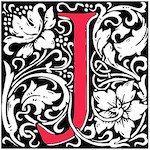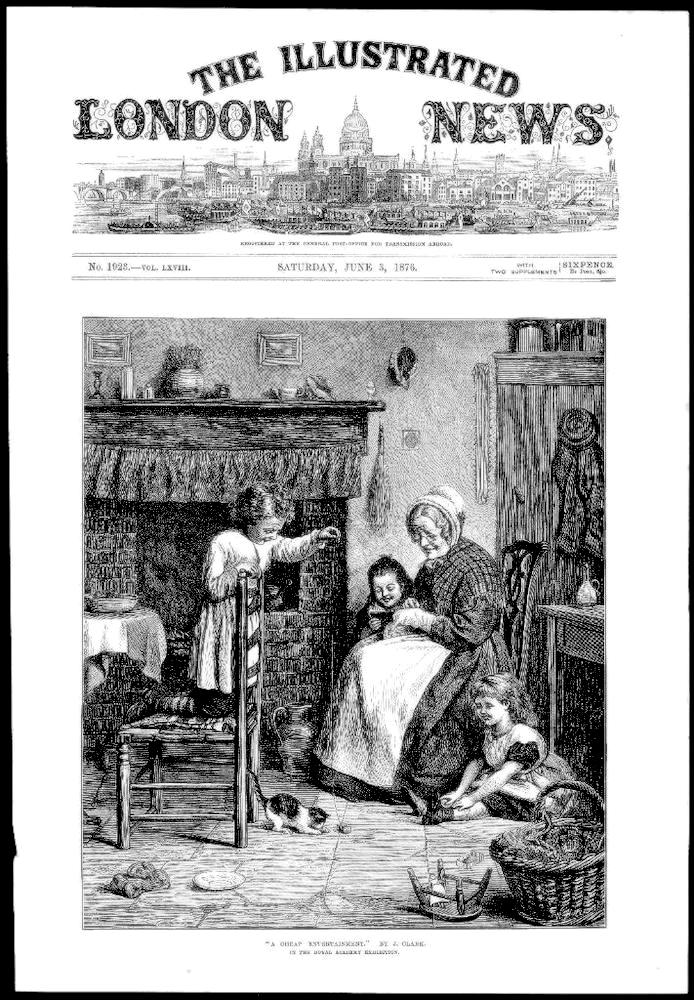
oseph Clark (occasionally written as "Clarke," and not to be confused with the name of his nephew, Joseph Benwell Clark, 1857-1938) was born on 4 July 1834, to a "draper and calico bleacher" at Cerne Abbas, a few miles from Dorchester, in Dorset ("Artist in Oils"). After attending a local Dame School, at the age of eleven he went as a boarder to be taught by the Dorchester poet, William Barnes, before being withdrawn and apprenticed to a chemist, to help the family's failing fortunes. Luckily, one of his elder brother's contacts facilitated his move to London, where he could follow his own heart and foster his gift for drawing at what was then Leigh’s Academy, before entering the Royal Academy Schools.

Self-portrait, 1856.
Clark had particular skill in genre painting, and gained recognition with his first submissions to exhibitions, The Dead Rabbit at the British Institution, and The Sick Child at the Royal Academy, both in 1857. From then on he exhibited his work regularly at the Academy and also at other major and more local galleries. Perhaps even more important, his touching portrayals of family life became a popular choice for engravings, and he reached a large audience through their appearance in periodicals, annuals (like the Pears Annual of 1911, which featured his Family Worship) and newspapers. Two of his paintings (Early Promise, 1877, and Mother's Darling, 1884) were purchased by the Tate through the Chantrey Bequest. His work was popular in America too: in 1876, according to his obituary in the Studio, he was "awarded a bronze medal of the Centenary Exhibition in Philadelphia."

Clark's A Home Entertainment, featured on the front cover
of the Illustrated London News of 3 June 1876.
Dorset was never far from his thoughts, and Clark kept a house there for some time, but settled down in London, first at Islington, where his mother joined him, then in Hampstead, next in Harrow-on-the-Hill, and finally in Uxbridge, before moving away from the capital to Kent. He had married in Winchester on 30 September 1868 and in the following years he and his much younger wife Anna (née Jones) had brought up four children, who often served as his models.
Having been brought up in the Swedenborgian Church, Clark is known to have been a member of the Argyle Square and later Willesden Swedenborgian churches while he was in London (see "Swedenborgianism and the Visual Arts"), and his marriage was recorded in the Swedenborgian church's "Intellectual Repository," 193), so it is not surprising that he sometimes painted religious subjects too. He died in Ramsgate on the Isle of Thanet on the very day of his 92nd birthday.
His nephew, Joseph Benwell Clark, stayed with him in London for a while, while studying at the Slade. He too became a successful artist. — Jacqueline Banerjee
Bibliography
The Intellectual Repository and New Jerusalem Magazine Vol.XV (1868): 579. Google Books. Free ebook. Web. 20 November 2024.
"Joseph Clark (1834-1926): Artist in Oils." Dorset Ancestors. Web. 20 November 2024. https://dorset-ancestors.com/joseph-clark-1834-1926/
"Obituary." The Studio. Vol. 92 (July-December 1926): 193. Google Books. Free ebook. Web. 20 November 2024.
Roe, F. Gordon. Victorian Corners: The Style and Taste of an Era. London: George Allen and Unwin, 1968.
"Swedenborgianism and the Visual Arts." World Religions and Spirituality Project. Web. 20 November 2024.
Wood, Christopher. The Dictionary of Victorian Painters. 2nd ed. Woodbridge, Suffolk: Antique Collectors' Club, 1978.
Created 20 November 2024